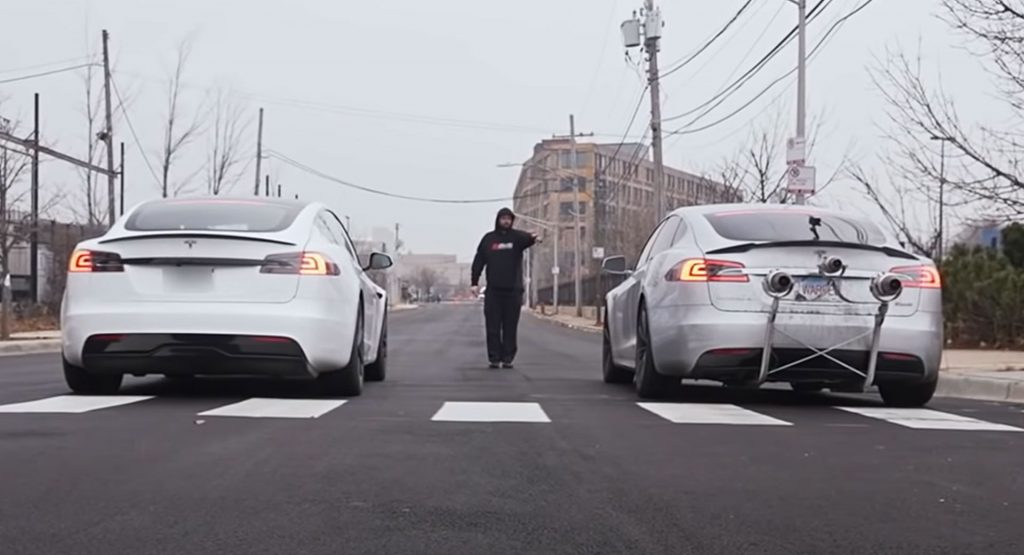Last month, the owner of a Tesla Model S P85D decided he wasn’t going to wait around for the Tesla Roadster’s long-promised ‘SpaceX’ package and fitted his EV with a trio of small jet engines to make it even quicker.
During initial tests with the three jet engines operating at full power, the owner recorded a 0-60 mph (96 km/h) time of 3.32 seconds. By comparison, the car needed 4.38 seconds to hit 60 mph on the same piece of tarmac with the jet engines switched off. Evidently, they add quite a bit of thrust and do indeed boost the car’s performance.
Eager to see how his modified Model S P85D would perform against the ultimate Tesla, the Model S Plaid, the owner teamed up with AMS Performance to test the two cars side to side. The duo were raced in blisteringly cold conditions on a damp piece of road, no doubt impacting their acceleration.
Watch Also: Do Jet Engines Make The Tesla Model S Even Quicker?
Nevertheless, the jet-powered Model S walked away with an easy victory over the Plaid in the first race. However, the Plaid was ‘only’ in its Sport mode at the time, not the Drag Strip mode that allows it to hit 60 mph in less than 2.5 seconds in ideal conditions. The results are very similar in the second race, although the Plaid was slightly closer but still couldn’t quite keep up.
It wasn’t until the third race that the Plaid took a victory, despite it still not being in Drag Strip mode. A couple of other races were held and both were very close but in the last race, the Plaid did start to pull away from the P85D as one of its jet engines shut down.
Would the results have been this close if the Plaid’s Drag Strip mode was enabled? Maybe, maybe not, but enabling the Drag Strip mode means the battery needs to condition itself for 10 minutes, so it’s not exactly something you can use while racing between the lights anyway.



